Extending the Retirement Age Again to 67 for Pilots
In late 1959, the Federal Aviation Agency (FAA) released its "Age lx Dominion," which provided that pilots over lx could not participate in "role 121 operations." These operations include piloting large commercial passenger aircraft, smaller propeller aircraft with x or more than passenger seats, and mutual carriage operations of all-cargo shipping with a payload capacity of vii,500 pounds—essentially forcing mandatory retirement for all airline pilots as shortly as they reached age threescore. As his 60th birthday chop-chop approached, Helm Michael Gitt appealed to the Air Line Pilots Association (ALPA) to assistance him with an historic period discrimination lawsuit confronting Eastern Airlines to help him overturn the "Age 60 Rule," an try to leverage the new Age Bigotry in Employment Act of 1967 (ADEA).
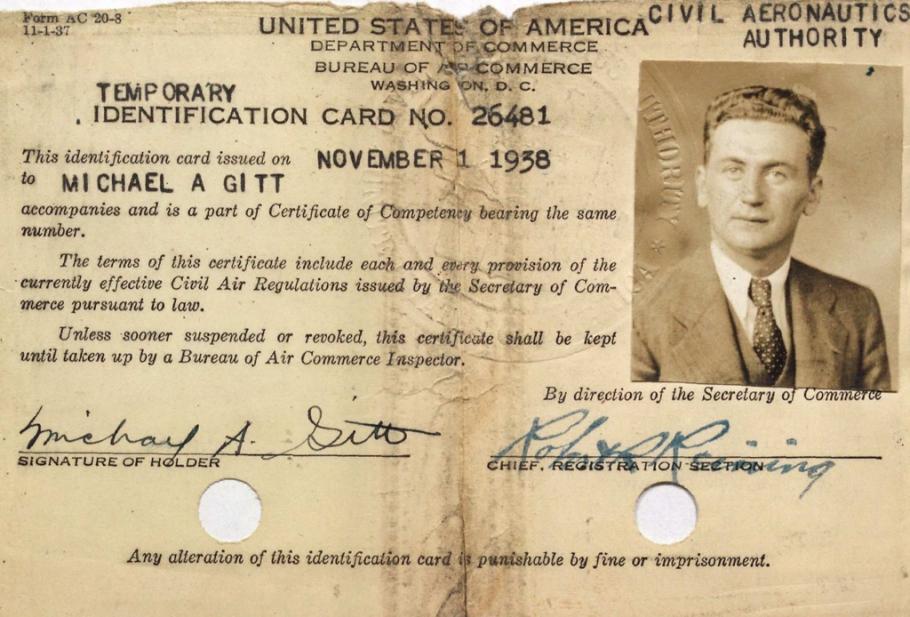
Michael Gitt was born in 1908 in New York, just five years after the showtime flight of the Wright Brothers. In 1930, he applied to join a affiliate of the Nicholas-Beazley Flying Club Clan with a ane/30th interest, which included a pale in an aircraft and guaranteed solo flying fourth dimension. He marked his beginning solo flight on May 13, 1931 in a Brunner Winkle Bird and soon after bought a Buhl Flying Bull Pup. By 1935, he owned a Taylor Cub and had started a "diversified aeronautical enterprise consisting principally of flight teaching, sales, service and charting of airplanes" at the Flushing Airport.
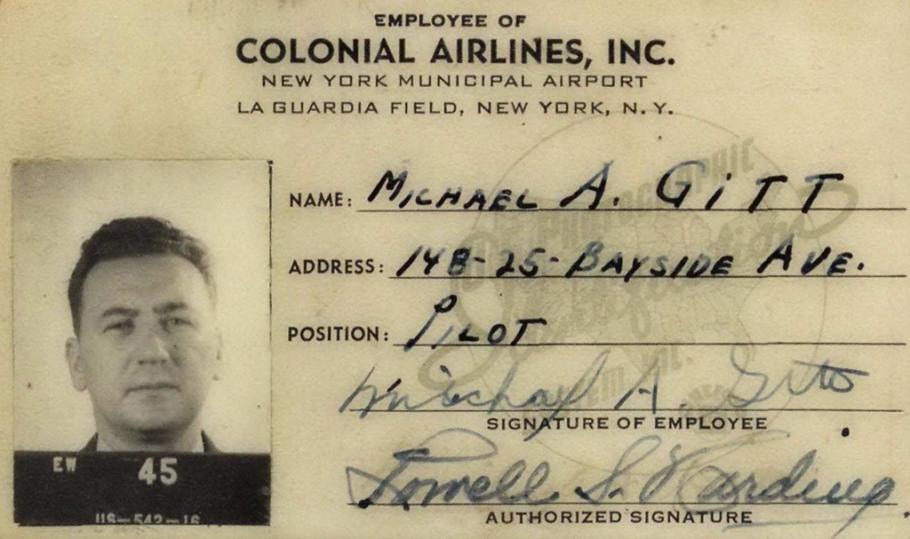
Gitt's dream was to be an airline pilot. He held a chauffeur'south license for many years every bit a side business organization. He worked contract jobs with Bennett Air Service, Seversky Shipping Corporation, Aero Service Corporation, and the Civilian Pilot Preparation Plan. He took the civil service exam and filed applications with Pan American Grace Airways, Mid Continent, Continental, Pennsylvania-Fundamental, Northwestern, United Airlines, TWA, and American, to no avail. Airlines cited his lack of formal teaching (he had only completed two years of high school), their requirement of at least 1200 flight hours, and, ironically, an age limit of 30 years for the position of first officer (Gitt was 32 at the time).
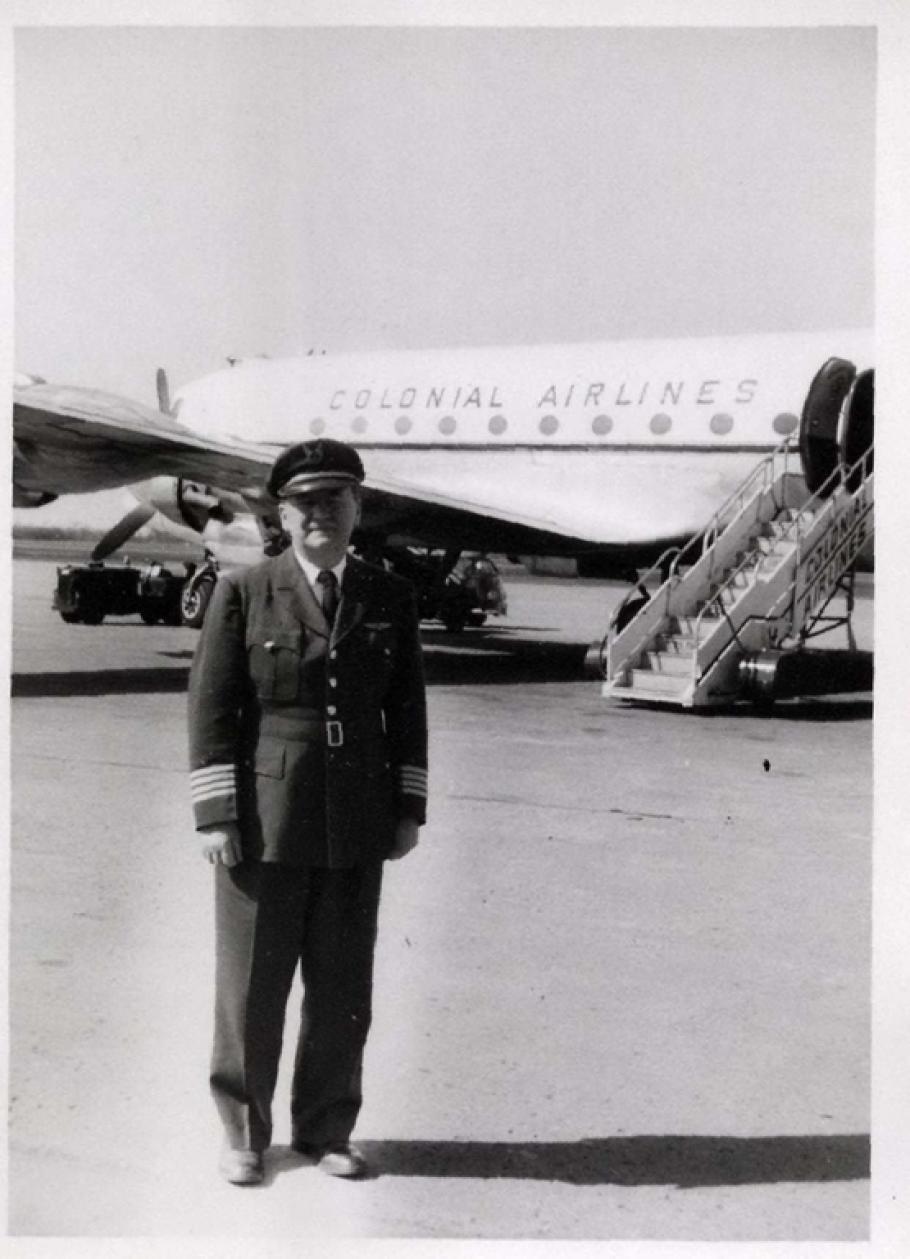
Canadian Colonial Airways hired Gitt in August 1940 equally a commercial airline pilot. Information technology was a earth where flying hours and seniority meant everything—the best routes, the all-time planes, leaves of absenteeism, vacation time, continued training, etc. And all of this was based upon frail contract negotiations betwixt the airlines and the pilots' unions, of which Air Line Pilots Clan (ALPA) was ane of the largest. Gitt was an agile fellow member of ALPA Local Council #28 (Colonial Airlines) from the beginning of his commercial airline career. Gitt was also a fellow member of the ALPA Retirement Commission, which worked in the belatedly 1940s to establish a system for retired airline pilots. His wife, Cornelia (Connie) Gitt, who had flight time of her own, was also involved in working on a wives' prophylactic petition.
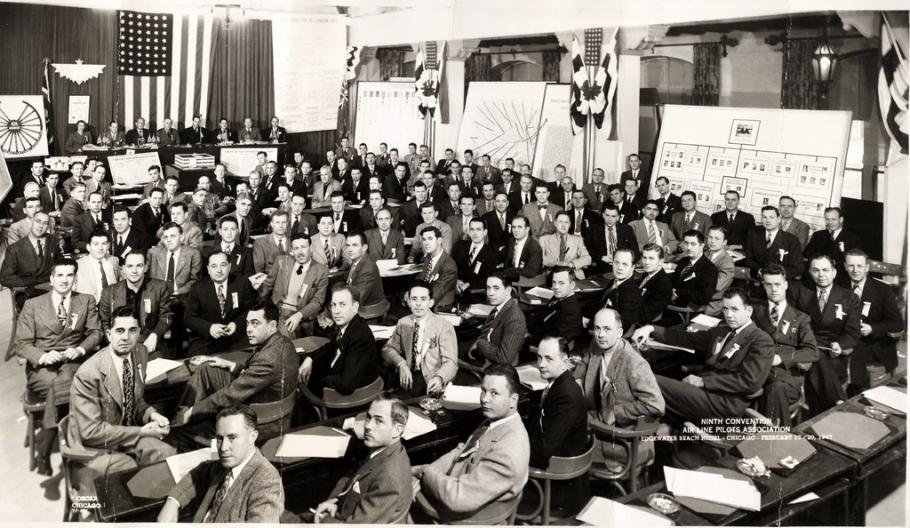
Gitt was known for filing many letters of grievance to the airline and ALPA. In 1943, he arranged of exit of absence from Colonial Airlines (the new name of Canadian Colonial as of 1942) to work equally an experimental pilot for Sperry Gyroscope's war efforts. When he was "released" instead, he worked with ALPA to regain his position. In 1949, he filed an official grievance against Colonial when the airline suddenly extended a deadline to bid for a Bermuda flight route, a contract violation according to Gitt, who initially had seniority to bid for and be granted the run. But after the extension, another pilot with more seniority earned the run instead. Although the grievance was denied in April 1950, the appeals process lasted through 1952, further complicated by a corruption investigation into Colonial president Sigmund "Rad" Janus.
The idea of a mandatory retirement age for pilots had a long history. Some airlines had always had age limits for pilots. But on December 1, 1959, the newly renamed FAA under retired Air Force General Elwood "Pete" Quesada issued the "Age sixty Rule" for all airline pilots, scheduled to go into effect in March 1960. The FAA claimed that it was a matter of public safety to remove older pilots with possibly deteriorating health. The advent of newer planes with turbojet technology enhanced that argument—these shipping would have been assigned to older pilots nether seniority rules. While the Air Send Clan and the Ceremonious Aviation Medicine Clan supported the rule, the ALPA immediately sued, losing the case of ALPA v Quesada. ALPA tried and failed again in 1966 when South.W. Hunter requested an exemption to the rule, volunteering to get a physical every three months. Shortly afterwards, a Captain Furlow provided a physical at the Lovelace Foundation (known for its testing for the United states Astronaut program, particularly the Women in Infinite Program) and was as well denied.
Meanwhile, Colonial Airlines merged with Eastern Airlines in 1956 and Michael Gitt continued equally a commercial airplane pilot, earning commendations from passengers and remaining active with ALPA. As the clock ticked down to his 60th birthday on May xiii, 1968, Gitt petitioned for a waiver from the FAA to extend his career beyond 60—he failed. He likewise asked the ALPA to form a committee to study the problem, acknowledging that he may non exist able to get the courts to reverse the rule, but that at least the union could piece of work on hereafter possibilities. In Nov 1967, a small group of Eastern executives made a trip to Washington, DC, to explore legislative possibilities. Though some, including ALPA President Charles Cerise, had misgivings about a committee, the Special Committee on Compulsory Retirement ("Age sixty Committee" for short) was formed in early on 1968.
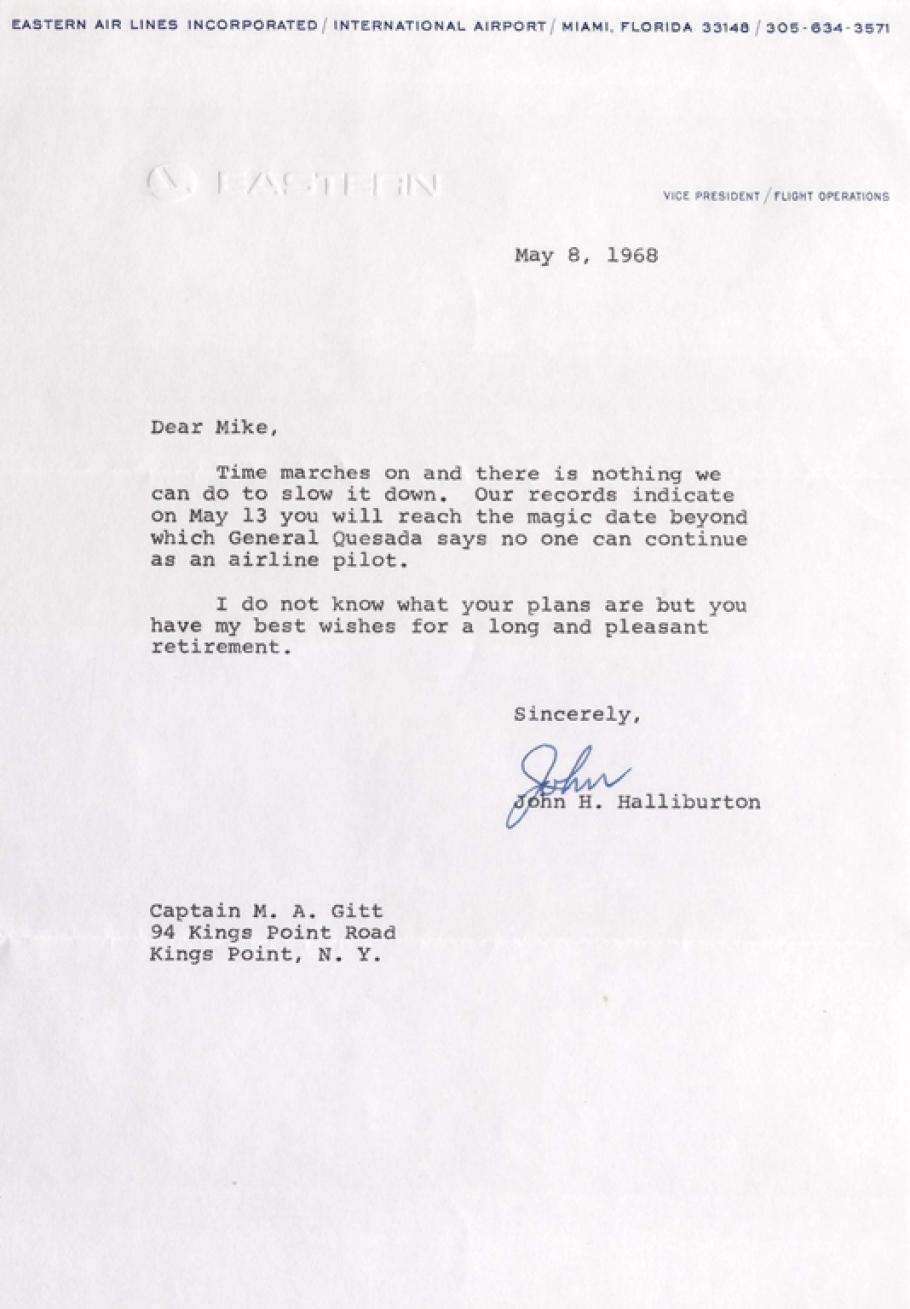
The Committee tried many tactics in its attempts to gain support in Congress. In September 1968, they wrote to New Jersey Senator Harrison A. Williams regarding his opposition to mandatory compulsory retirement. The ALPA recalled to Williams his September 9, 1968 entry into the Federal Register in which he cited the longevity of baseball player Satchel Paige as a warning against arbitrary mandatory retirements.[*]
Gitt was relentless in his enquiry regarding the Age 60 Rule and he believed that he had plant a new potential weapon to go on the pursuit of his dream as a pilot—the recently passed Age Discrimination in Employment Act of 1967 (ADEA). The law protected certain applicants and employees 40 years of age and older from bigotry on the basis of historic period in hiring, promotion, discharge, compensation, or terms, conditions or privileges of employment. Unfortunately, his lawyers found that the Department of Labor (DOL) had already addressed the Age lx Rule, determining that age was a "bona fide occupational qualification (BOFQ)" for employment every bit a pilot and non subject to ADEA. While they cautioned that the historic period discrimination argument would not win, it should exist kept in their dorsum pocket if other points failed.
Other possibilities mentioned for pilots over the age of 60 were to continue with the airlines as flight instructors, ferry pilots, or check pilots. But Gitt found that at Eastern he was caught in a catch-22. Well-nigh support roles yet required continued eligibility to wing the line as a full pilot, which he could not do over lx. He applied to be a supervisory pilot, but the airline maintained that he was not an eligible candidate since he had not applied for that kind of position before forced retirement, having preferred to wing the line.
Undeterred, Gitt enlisted attorney F. Lee Bailey to file a human rights law violation complaint against Eastern Airlines and its vice president S.50. Higgenbottom in the Country of New York'due south Partition of Human Rights. In this complaint, Gitt asked to be rehired in an alternate position with his seniority restored, reimbursement for lost wages, and court costs. The public hearing took identify on July 15, 1969. On February 6, 1970, Commissioner Robert Mangum issued his findings that the airline "did not commit whatsoever unlawful discriminatory acts against [Gitt] because of his age."

Later this defeat, Gitt resigned himself to retirement. Although he could no longer wing for a large commercial airline, he continued to wing for some fourth dimension. In 1970, he listed himself as the primary pilot for Airspur Corp. He went on to be the director of marine activities for the Park District of Great Neck and was certified by the U.s. Declension Guard and the Cherry-red Cross as a sailing instructor. He afterward fulfilled a lifelong dream, earning his glider pilot license and making several flights in a Schweitzer SGS ii-33 Glider. Michael Gitt remained an active member of the Retired Eastern Pilots Association (REPA) until his death in 2002.
The ALPA and pilots continued their battle against the "Historic period 60 Rule" for decades afterward its proclamation in 1959 and implementation in 1960. President George W. Bush signed the Off-white Handling for Experienced Pilots Deed raising the retirement age to 65 in 2007.
[*] In August 1968, Satchel Paige was back in the headlines when the Atlanta Braves signed him to a new contract at the age of 62. He had played his last professional baseball game but a few days shy of age sixty. Since the majority of his playing days were spent in the Negro Leagues, ineligible to play in segregated Major League Baseball, he came in mere days short of qualifying for a alimony. The Braves contract gave him the service time needed for his pension.
lockhartbriat1944.blogspot.com
Source: https://airandspace.si.edu/stories/editorial/age-60-rule-michael-gitts-1968-case-against-faa
0 Response to "Extending the Retirement Age Again to 67 for Pilots"
Post a Comment